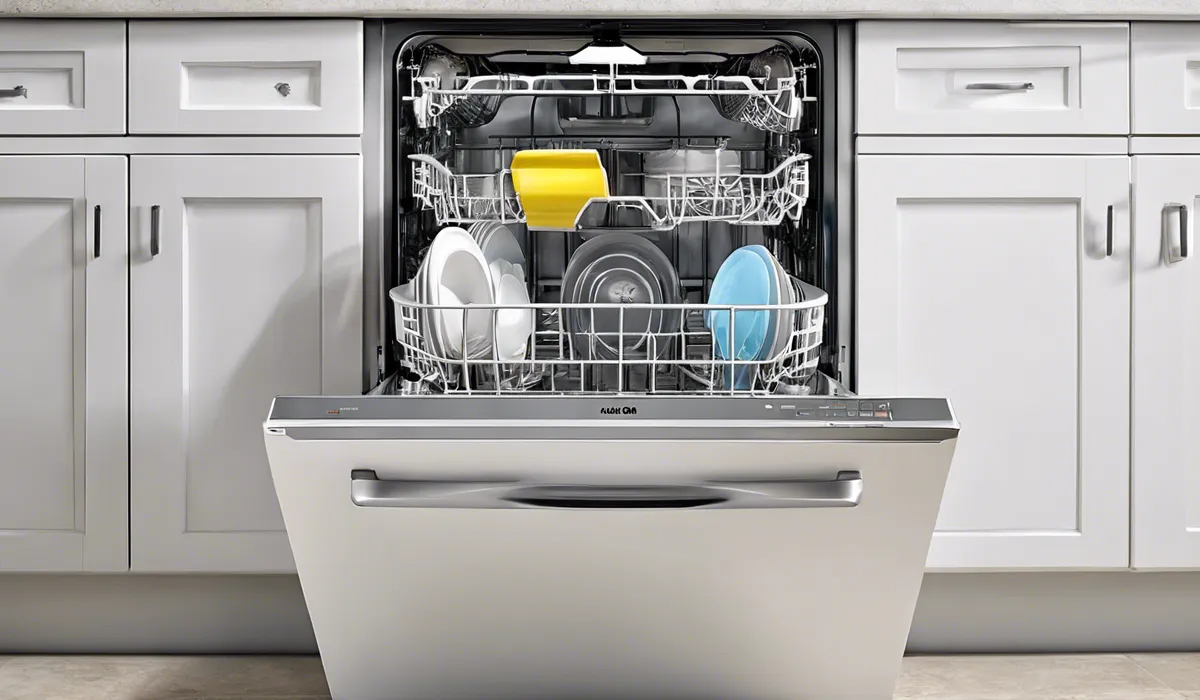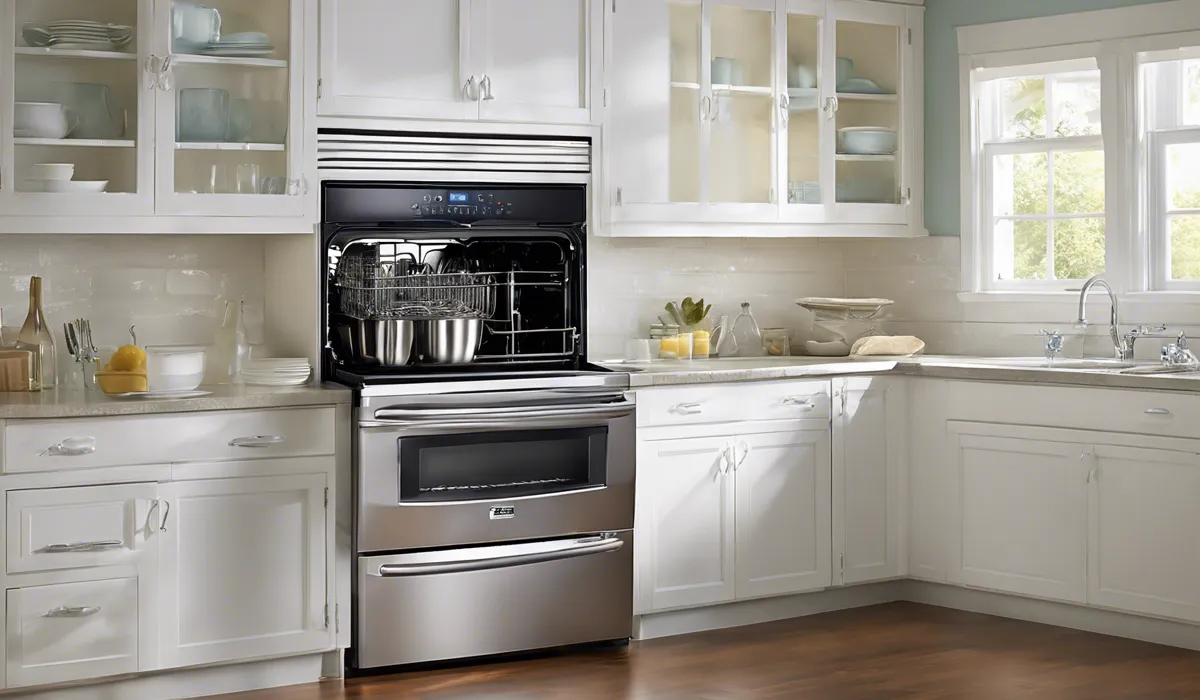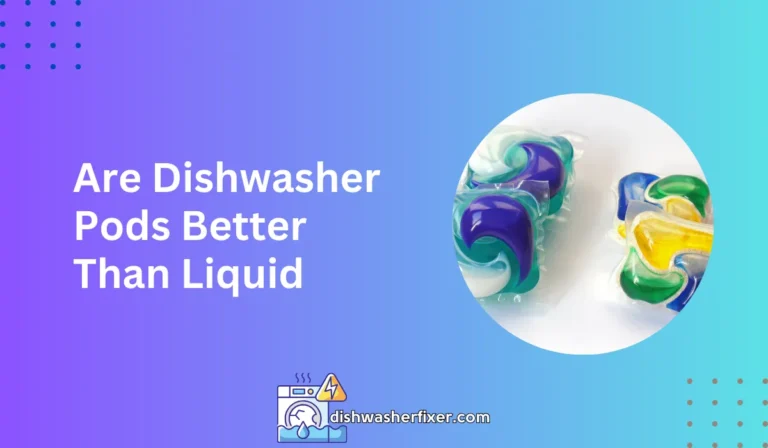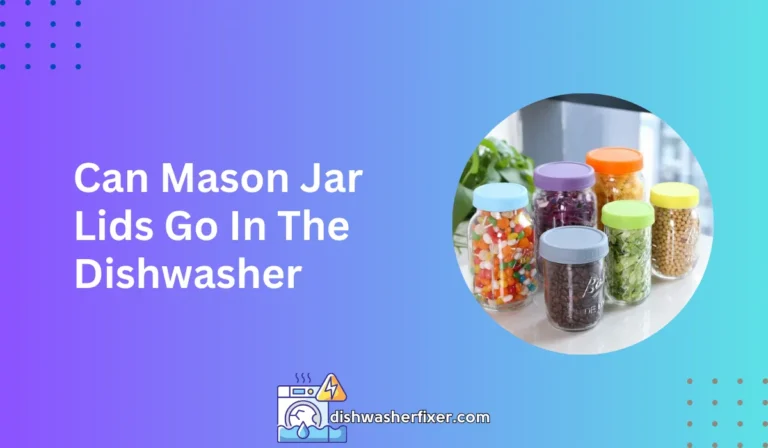How to Get Rid of White Residue in Dishwasher: Sparkling Tips
To eliminate white residue in a dishwasher, clean the appliance with a cup of white vinegar on a hot cycle. Ensure the rinse aid dispenser is filled and check that you’re using the correct detergent amount. Soften your water with a water softening agent if hard water is the issue.
Causes of White Residue in Dishwashers

Hard Water Deposits
One of the most common causes of white residue in dishwashers is hard water. Hard water contains high levels of minerals, such as calcium and magnesium, which can leave deposits on dishes and the dishwasher’s interior.
Over time, these minerals build up and become visible as a white, chalky substance. The problem can be exacerbated by hot water, which causes minerals to precipitate more rapidly.
To address this, it’s essential to understand your water hardness level. You can either obtain this information from your local water utility or by using a home water test kit. If hard water is the culprit, a water softener may be necessary to prevent future build-up.
Phosphate-Free Detergents
In an effort to be more environmentally friendly, many dishwasher detergents have removed phosphates, which were excellent at dealing with hard water but had environmental drawbacks.
Unfortunately, phosphate-free detergents may not be as effective at removing minerals, which can result in white residue.
While these detergents are better for the environment, they sometimes require additional help to get your dishes sparkling clean.
Overloading the Dishwasher
When you overload the dishwasher, water and detergent cannot circulate properly. This poor circulation means that dishes may not be rinsed thoroughly, leaving detergent residue.
It’s crucial to load the dishwasher according to the manufacturer’s instructions to ensure that water and detergent reach all surfaces.
Additionally, overloading can prevent the proper drainage of water, which can lead to residue build-up. To prevent this, make sure that you’re not stacking dishes too tightly and that the spray arms can rotate freely.
Inadequate Rinsing
Another factor contributing to white residue is inadequate rinsing. If the dishwasher isn’t rinsing dishes effectively, detergent and food particles can be left behind.
This issue might stem from a malfunctioning rinse aid dispenser or simply not using a rinse aid. A rinse aid helps water to sheet off dishes more effectively, reducing spots and residue.
Food Particles and Grease
When dishes are not pre-rinsed or scrapped properly before being placed in the dishwasher, food particles and grease can stick to the dishes and interior surfaces.
Over time, these can contribute to the white residue problem as they mix with hard water deposits and detergent. Ensuring that your dishes are free from large food particles and grease can help mitigate this issue.
Preventative Measures to Avoid White Residue

Regular Maintenance and Cleaning
Regular maintenance and cleaning of your dishwasher are essential for preventing white residue.
This includes cleaning the filters, wiping down the gaskets, and checking the spray arms for clogs. Keeping your dishwasher clean ensures that water flows freely and that detergent can do its job effectively.
Water Softeners and Rinse Aids
If hard water is an issue in your home, using a water softener can significantly reduce the likelihood of white residue.
Water softeners remove the minerals responsible for hard water deposits. In conjunction with a water softener, using a rinse aid can help prevent water spots and residue by improving the drying process.
Proper Loading Techniques
Properly loading the dishwasher is not just about making everything fit. It’s about ensuring that water and detergent can reach and clean every dish.
Avoid nesting and ensure that there is enough space between items for water to circulate. Place the dirtier items facing the center, where the spray is strongest, and avoid blocking the spray arms with large items.
Selection of the Right Detergent
Choosing the right detergent is crucial. Consider detergents designed for hard water if you’re experiencing white residue due to mineral build-up.
These detergents often include water softening agents that can help prevent the white residue from forming.
Use of Vinegar as a Natural Rinse Aid
Vinegar is a natural and effective way to combat white residue. It can be used as a rinse aid to help remove hard water spots and to keep the dishwasher smelling fresh.
Simply fill the rinse aid dispenser with white vinegar, or add a cup of vinegar to the bottom of the dishwasher before running a cycle.
Step-by-Step Guide to Remove White Residue

Empty the Dishwasher
Start by emptying your dishwasher completely. Remove all dishes and utensils to ensure that you have full access to the interior of the appliance.
This will allow you to thoroughly clean all the components that might be contributing to the white residue problem.
Clean the Filters
Most dishwashers have a filter that needs to be cleaned regularly. Remove the filter according to the manufacturer’s instructions and wash it under running water.
Use a soft brush to remove any food particles or mineral deposits. A clean filter helps maintain proper water flow and cleaning efficiency.
Run a Vinegar Cycle
After cleaning the filters, place a cup of white vinegar in a dishwasher-safe container on the upper rack.
Run the dishwasher on the hottest cycle. The vinegar will help to dissolve any mineral build-up and can help sanitize the dishwasher’s interior.
Clean the Spray Arms
Check the spray arms for any blockages. Small bits of food or mineral deposits can clog the holes in the spray arms, leading to poor water distribution. Use a toothpick or small tool to clear any blockages, and rinse the arms well.
Wipe Down the Interior
After the vinegar cycle, wipe down the interior of the dishwasher, including the walls, door, and gaskets, with a soft cloth. Pay extra attention to the areas around the door seal and detergent dispenser, where residue commonly accumulates.
Assess and Adjust Settings
Finally, review your dishwasher’s settings. Ensure that you’re using the correct cycle for your dish load and that the water temperature is set high enough to effectively clean and rinse your dishes.
If your dishwasher has a water softening feature, make sure it’s activated or adjusted correctly.
FAQs About Getting Rid of White Residue in Dishwasher
How can I prevent white residue from appearing in my dishwasher?
To prevent white residue, ensure you are using the correct amount of detergent, keep the rinse aid dispenser filled, and run the dishwasher on a hot cycle with white vinegar occasionally.
What is the best way to clean a dishwasher that has white residue?
Clean the dishwasher by placing a cup of white vinegar on the top rack and running it on the hottest cycle.
Can hard water cause white residue in my dishwasher?
Yes, hard water can cause white residue. Use a water softening agent to mitigate this issue.
Is it important to use a rinse aid to remove white residue in a dishwasher?
Yes, using a rinse aid can help eliminate white residue by improving drying and preventing water spots.
How does the amount of detergent affect the white residue in dishwashers?
Using too much or too little detergent can contribute to white residue; follow the recommended amount for your specific dishwasher and water hardness.
Final Thoughts
To combat white residue in your dishwasher, run a hot cycle with a cup of white vinegar.
Regularly refill the rinse aid dispenser, and ensure the correct amount of detergent is used. If hard water is the culprit, incorporate a water softening agent to mitigate residue build-up.





